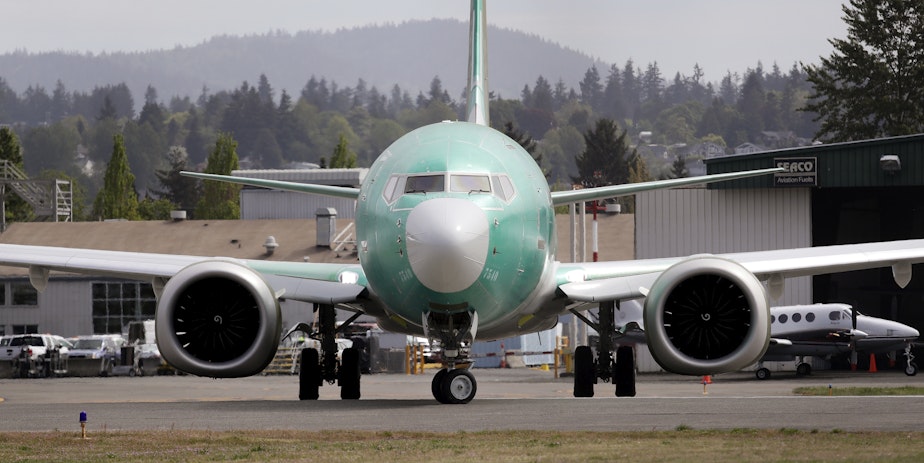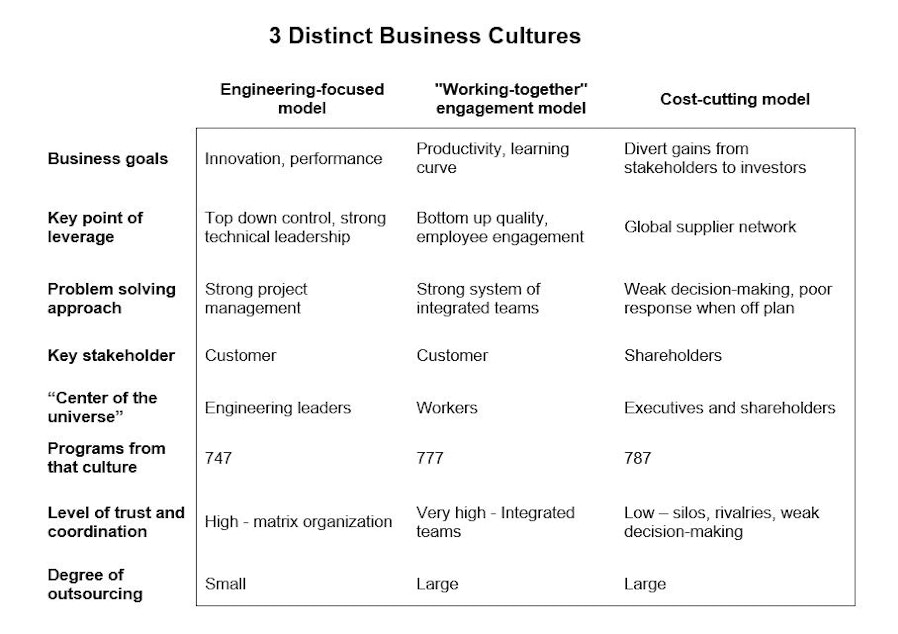SPEEA engineer breaks silence on Boeing's MAX 737. Read this letter

A senior member of the union representing Boeing’s engineers says Boeing’s cost-cutting culture is to blame for production problems with the 737 MAX and other planes.
Stan Sorscher, a Labor Representative at the Society for Professional Engineering Employees in Aerospace (SPEEA) is the author of the letter, offered to the Seattle Times as an opinion piece.
“The cost-cutting culture is the opposite of a culture built on productivity, innovation, safety or quality,” Sorscher writes.
“Boeing’s experience with cost-cutting business culture is apparent," he continues.
"Production problems with the 787, 747-8 and now the 737 Max have cost billions of dollars, put airline customers at risk, and tarnished decades of accumulated goodwill and brand loyalty.”
It’s the first time since the grounding of the Max that a senior figure in Boeing’s engineers union has spoken.
Though investigations into two fatal Max crashes are incomplete, evidence of engineering errors have surfaced – errors that were not discovered in testing. Questions have also been asked about the degree to which Boeing and the Federal Aviation Administration collaborated in certifying the plane as airworthy.
Sorscher, a former Boeing engineer, points to a major change in Boeing’s internal culture in the late 1990s.
Before that time, the company was focused on the performance of its products.
This was the era of the bold bet on the 747, and it was also a time when a low little plane called the 737 got its start. That plane became Boeing’s best-seller and remained so over many iterations.
In the 1990s, according to Sorscher, Boeing put workers at the center of its performance-driven universe. That plane of that era was the 777. It was a time of partnership between workers and executives as they learned together how to produce the plane, and many engineers speak of this period as the most fulfilling in their professional lives.
Among the most glorious moments – Boeing executive Alan Mulally hugging a worker who had helped to solve a problem, getting grease all over his thousand-dollar suit and plainly not caring.
“It would have been career-limiting to withhold negative information from managers” at the time, Sorscher observed.
But that has changed. With the 787 program in the late 1990s, Sorscher says, Boeing reset the playing field. Washington state would have to compete with other jurisdictions, offering tax breaks to secure production lines. Suppliers would have to compete with rivals around the world. Workers would discover their positions were precarious.
The atmosphere inside Boeing changed.
In an interview with KUOW, Sorscher said Boeing engineers receive clear cultural messages that identifying problems is thought of by management as making trouble.
“If the message is 'follow the plan' and you watch co-workers who raised an objection and the problem isn't taken seriously or they're considered troublesome, then that's a cultural message you pick up,” he said.
From a shareholder perspective, Boeing’s approach to its business has been wildly successful. The company is enduring its second worldwide grounding in recent memory.
However, worldwide demand for airplanes is riding a high. And Boeing has diverted cash flow into dividends and share buybacks that have helped boost the company’s stock.
From 2000 to the present, Boeing’s stock price has grown from $44 to $356. The stock hit a peak of $440 just before the crash of an Ethiopian Airlines Max jet last March.
A spokesman for SPEEA confirmed that the union had given Sorscher permission to produce the letter, however he could not say that the union specifically endorsed it.
This story will be updated. KUOW has reached out to Boeing and others for comment.
CORRECTION: The headline and first paragraph have been edited to reflect that the letter is not an official statement from SPEEA.
Read Sorscher's letter to the editor:
Employees come to work to do their jobs. We aren't usually aware of workplace culture, even over the span of years.
We learn culture from our co-workers and managers when they make decisions and demonstrate problem-solving skills. Leadership messages affect thousands of decisions that add up to success or failure of the organization.
For many years, Boeing competed with Airbus and other producers for airline customers based on performance of its products. As a recent news report put it, Boeing now competes for investors with Exxon and Apple.
Boeing rose to the top of the airplane business as an engineering company, focused on performance of its products. Boeing made bold decisions that “bet the company,” and prevailed over competitors.
In the 90s, Boeing business culture turned to employee engagement, process improvement, and productivity – adopting the “quality” business culture that made Japanese manufacturers formidable competitors.
In the late 90s Boeing’s business culture shifted again, putting cost-cutting and shareholder interests first.
Sponsored

Some business cultures are well-suited to commodity-like products, but are a bad fit to performance-driven products.
Ask a financial analyst, “Are airplanes commodity-like or performance-driven?”
Business instinct is to cast the question as a market transaction. Airline customers worry about price, delivery dates, training costs, spares, maintenance, and other factors, but overall, those considerations come out very close in the end.
Sponsored
The last major innovation in air travel was the jet engine in the 1950s. A business analyst would say the airplane business is “mature,” the products are standardized, innovation is slow, so airplanes are commodity-like.
Now ask a different question. “Are the design, development, testing, and manufacture of airplanes commodity-like or performance-driven?”
Whoa. Tough question.
Actually, making airplanes is performance-driven.
Success or failure of an airplane program turns on productivity. The first airplanes off the production line sell at a loss. Costs come down over time; the quicker the better.
Sponsored
If your business model emphasizes productivity, employee engagement, and process improvement, costs go down faster. This was the essence of the “quality” business model Boeing followed in the mid-90s.
The 777 had the best “learning curve” in the business. On the other hand, if your industry is mature, and your products are commodity-like, business school theory says a cost-cutting model is appropriate.
Wal-Mart perfected its particular version of the cost-cutting business model. Amazon adapted that model to its industry. Boeing has adapted it to high-end manufacturing.
These companies are super-stakeholders with market power over their supply chains. The point of this business model is that the super-stakeholder extracts gains from the subordinate stakeholders for the short-term benefit of investors.
Subordinate stakeholders are made to feel precarious and at-risk.
Each supplier should see other suppliers as rivals. Similarly, each work location should know it competes on cost with rival work locations. Each state or local government should compete for incentives against rival states.
In this model, subordinate stakeholders never say no to the super-stakeholder – not workers, not suppliers, not state legislatures.
This cost-cutting culture is the opposite of a culture built on productivity, innovation, safety, or quality. A high-performance work culture requires trust, coordination, strong problem-solving, open flow of information, and commitment to the overall success of the program.
In a high-performance culture, stakeholders may sacrifice for the good of the program, understanding that their interests are served in the long run.
